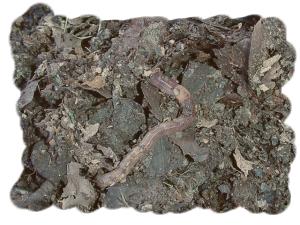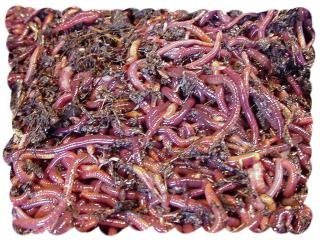Outdoor Vermicomposting - Jay Mertz
Before you learn to vermi-compost you must first learn to compost. You have to understand the relationship between bacteria, protozoa, microbes, nematodes, fungi, and organic material.
 True
compost or vermi-compost is "alive" and is the best way to inoculate the
soil with micro flora. This process is the best route to provide healthy
disease free soil and plants.
True
compost or vermi-compost is "alive" and is the best way to inoculate the
soil with micro flora. This process is the best route to provide healthy
disease free soil and plants. For those of you just starting a vermi-compost program, Mary Applehof's book "Worms Eat My Garbage" is a must. The basic information about worms, worm care, and what happens in a worm bin is excellent. The basic plastic bin that her book promotes is just too small. It is a great learning tool for the classroom, but just does not produce enough vermi-compost for a garden.
Some instructors teaching compost making are telling people, "you can't compost outdoors with earthworms." Obviously they are not raising earthworms. I wonder where they think earthworms come from? Commercial earthworm raisers have raised earthworms outdoors on the ground as long as they have been raising earthworms. Large scale vermi-composters in California have acres of earthworms where as much as 100 tons of waste material can be fed per day. Get your earthworms outdoors!
 Beside
your compost pile make an earthworm bed or box 30" wide, 48" long, and
18" deep. It can be constructed out of any material you want, no bottom,
just sides and ends. A cover can be used to help protect it from flooding
rains. Start the box with 6" of partially finished compost from your compost
pile, add 2 pounds of earthworms, and 1 pound of food waste per 1 pound
of earthworms every 5 to 7 days. Do not overfeed with the food waste.
Overfeeding can be harmful to the earthworms.
Beside
your compost pile make an earthworm bed or box 30" wide, 48" long, and
18" deep. It can be constructed out of any material you want, no bottom,
just sides and ends. A cover can be used to help protect it from flooding
rains. Start the box with 6" of partially finished compost from your compost
pile, add 2 pounds of earthworms, and 1 pound of food waste per 1 pound
of earthworms every 5 to 7 days. Do not overfeed with the food waste.
Overfeeding can be harmful to the earthworms. Food waste must be decomposed by the micro flora before an earthworm can consume the waste. An earthworm does not have teeth; therefore, it can only ingest waste material as it decomposes. The earthworm receives most of its nutrition from the micro flora, in particular, some varieties of fungi.
Each week add 1 pound of food waste per pound of earthworms, and 1 inch of partially finished compost from the compost pile. Excess food waste and other organic material are placed on the compost pile.
When the box or bin is full, remove the top 6" of material, place it beside the box, the 12 inches below is high grade vermi-compost. A 30" x 48" x 18" bin or box will produce 10 cubic feet of fermi-compost each time you empty it, which is over seventy gallons of material. When the box is working at maximum you will be able to remove material every 90 days. The six inchs that came off the top now goes back into the box to begin the process over again.
Jay Mertz is owner and operator of Rabbit Hill Farms.
Back to Garden section
